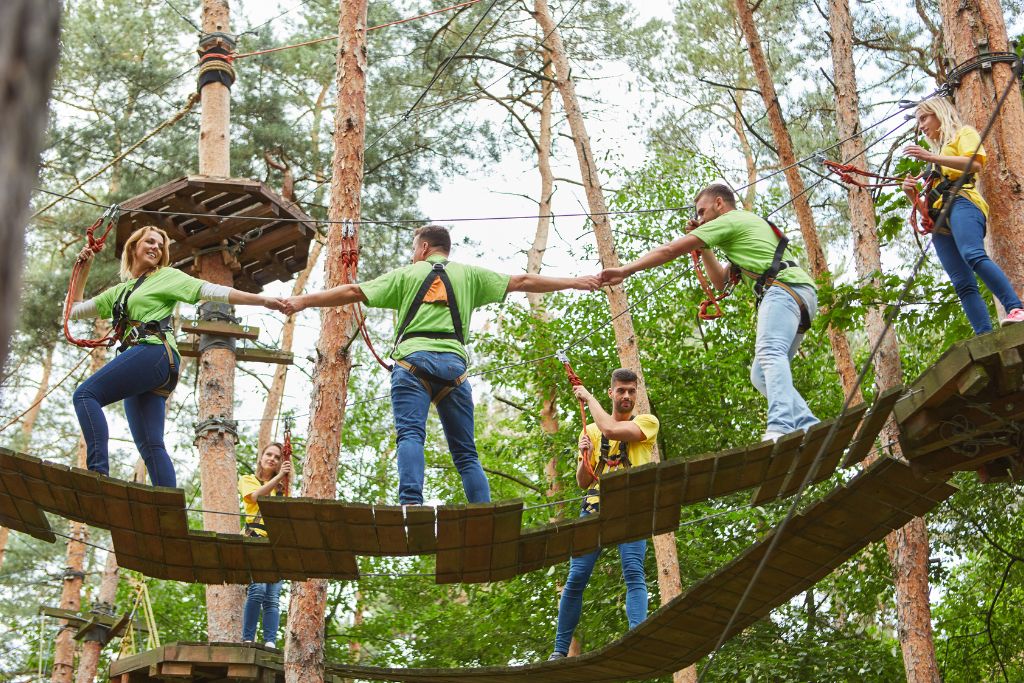Company-wide activities that help your team thrive and reach new heights require a holistic approach. You need to look at everything that makes your company tick—from the culture it cultivates to the processes and systems in place to handle business. Most importantly, you need to determine what areas of weakness your company has, and focus on strengthening those weak points through team-building activities. In this blog post, we’ll go over several ways you can use company-building activities in your business to strengthen it from within. It’s not just about creating an engaging atmosphere for employees either—these activities also help you make informed decisions about hiring, training new team members, developing leadership skills, etc. These aren’t things that are done just because they look nice on paper; rather, these actions fundamentally improve how people work together as a team.
Hiring team members who are a good cultural fit
Hiring team members who are a good cultural fit is important for your company’s success. When it comes to hiring, you should consider personality traits as well as technical skills. Your company culture should be reflected in the type of employee you hire. This can be done through activities like coffee chats and icebreaker games. These activities help you get to know new employees on a personal level so that they feel comfortable and happy at work.


Team-building activities also give your employees a chance to practice their skills and receive feedback on how they're doing at work. You could also use these events to identify areas where people need improvement and create training opportunities so that members are able to grow professionally, both personally and professionally.
Train your existing team on new skills and processes
Training your current team members on new skills and processes is one thing that you can do to help strengthen your company. If you’re just getting started with a new initiative, you want to know that everyone in the organization will be able to participate in the process.


Training employees on how to use new tools and methods help ensure that everyone is on the same page, which facilitates better communication within the team. Additionally, training employees on new skills and processes can help show them what they need to work towards achieving in order to advance their careers. With this knowledge, they’ll have a sense of purpose and build up an affinity for their job.
Hold off-site retreats for your leadership team
As a manager, you’re always looking for ways to support your team and make sure they stay engaged in their work. One way you can do this is through off-site retreats. Off-site trips are an excellent way to bring your company together and help create a sense of camaraderie. Off-site trips can be planned for any time of the year, but there are certain times when it makes more sense to plan them around specific needs, such as refreshments during a difficult period, or before reorganizing your business’s leadership team.


Off-sites have another benefit that you might not be able to see at first glance: they allow everyone on the team to get outside their normal routine and explore something new. Taking some time out of their day allows your employees to step back, take in different points of view, increase their creativity, and build new connections with one another. And that's just what you want from them!
Match employee volunteer activities with work functions
You would be surprised how much one-on-one time with your employees benefits them. As the company culture continues to grow, it is important to invest in ways that allow individuals to contribute and feel an impact. Volunteering can provide a platform for individuals to branch out and try new things, while also building their skills.


This way you can offer different opportunities at your company without having to worry about overlapping team members. It's also worth noting that individual volunteer activities work well as distractions from intense work hours too—they're a great way for employees to take a break, provide some solace during periods of stress, or just enjoy a little downtime.
Organize employee hackathons to build a culture of innovation
A successful company is one that always pushes boundaries and innovates to meet the needs of its customers. Hackathons are a great way to get creative minds working together on a common goal. These events do more than just allow your team to explore new ideas, however—they also provide insight into the company’s culture and ways in which it can improve. Organizing hackathons or other team-building activities help you delve into the company’s culture.


When you gather your employees in one place, they have time to talk and discuss their thoughts on how they feel they could improve themselves, their work, or their workplace as a whole. Employees often share what they think is wrong with the company and how it can be improved. These candid discussions help clarify your vision for the future of your business and give people an opportunity to air their grievances without fear of retribution from higher-ups. Organizing such events also helps in recruiting new employees who want to work for companies with similar cultures.
The bottom line
If you want to build your company into a competitive powerhouse, team-building activities are just as important for the whole team as they are for individual employees. This is the most important point: how can you bring your team together and make them feel like they are all in this together? There are a few things you may want to consider. You may want to create an environment that encourages collaboration and mutual respect among team members. You should also work on creating opportunities for employees who have never experienced what it's like to be part of a strong, cohesive unit before. Finally, make sure the activities you choose are fun and engaging—meaning more than just getting people out of their daily routine by taking them off-site (i.e., away from their desks).


Written by VeniVidiVideo
Comments
This post currently has no responses.